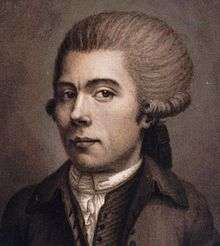Jean-Jacques Lequeu


Jean-Jacques Lequeu (September 14, 1757 – March 28, 1826) was a French draughtsman and architect.
Born in Rouen, he won a scholarship to go to Paris. Following the French revolution Lequeu's architectural career never took off. He spent time preparing the Architecture Civile, a book intended for publication, but which was never published. He became a civil servant working as a surveyor and a cartographer until his retirement in 1815.
Lequeu is now considered part of the period of "Visionary Architecture" which developed in the period leading up to the French Revolution. This was directly influenced by the great competitions organised by the Ecole des Beaux-Arts. These competitions encouraged entries comprising massive buildings unfettered by budgetary constraints. This resulted in scores of designs for vast and impressive buildings which had little connection with the real world and remained "paper architecture". Architects of this genre include Claude-Nicolas Ledoux, Étienne-Louis Boullée, and Antoine Laurent Thomas Vaudoyer; most of these, like Lequeu, are more famous for their unbuilt works than for buildings actually constructed.
Most of his drawings can be found at the Bibliothèque nationale de France. Some of them are pornographic and are kept in the Enfer of the library. They include a cow barn in the shape of an Assyrian bovine; an erotic garden folly called the Hammock of Love, replete with a copulating couple; a priapic fountain in a Gothic tabernacle and two self-portraits in drag. Most of these drawings have been reproduced in Duboy's book.
Lequeu died in Paris in 1826.
See also
Bibliography
- Philippe Duboy. Lequeu : An Architectural Enigma. MIT Press; ISBN 978-0-262-04086-0 (November 29, 1986)
- Emil Kaufmann. Three Revolutionary Architects: Boullée, Ledoux, and Lequeu. American Philosophical Society, 1952.
- Jean-Claude Lemagny. Visionary Architects: Boullée, Ledoux, Lequeu. Hennessey & Ingalls; ISBN 0-940512-35-1; (July 2002)
External links
| Wikimedia Commons has media related to Jean-Jacques Lequeu. |